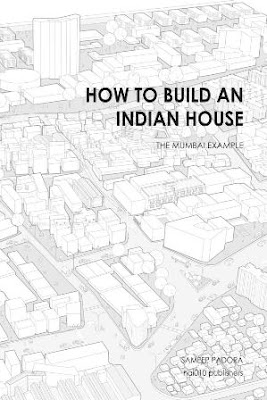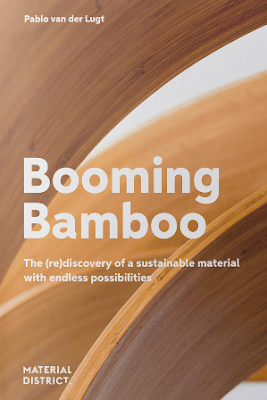Joseph Hiriart, Art Déco-aren maisu : arkitektura-bidaia Lapurditik Tunisera (1925-1936) / Lauren Etxepare.
Bilbao : UPV-EHU, 2020.
99 p. : il.
Serie: Arte Textos ; 8. / EUS / Libros / Arquitectura – País Vasco / Art deco (Arquitectura) / Joseph Hiriart
📘 Ed. impresa: ISBN 9788413191690 Cita APA-7: Etxepare Igiñiz, Lauren (2020). Joseph Hiriart, art déco-aren maisu : arkitektura-bidaia Lapurditik Tunisera (1925-1936). UPV-EHU.
ehuBiblioteka BCG A-72HIRIART JOS https://ehu.on.worldcat.org/oclc/1202604096 [.eus] Tunisiako iparraldean kokatzen da Tunis. Kartago antzinaroko hiritik hurbil eta Siziliako itsasertzetik 150 bat itsas miliara. Mendebaldean, bere Medinaren bizkarretik, Sebkha Sedjoumi lakua dauka, eta ekialdetik, Bahira zingira, zeina bere muturrean irekitzen baita Goletako kanalaren bidez, Tunisko golkoarekin eta Mediterraneo itsasoarekin bat egiteko. Bi hiri hartzen ditu bere baitan: Medina arabiarra eta hemeretzigarren mendetik aurrera zingira-lurren gainean eraikiriko hiri europarra. Azken honi Frantziaren enbaxadak eman zion hasiera 1862an. Enbaxada eta Medina lotzeko, Promenade de la Marine pasealekuaren lehen zatia zabalduko zen laster. 1881ean, herrialdea Frantziaren menpeko Protektoratua bilakaturik, bizkortu egin zen hiri kolonialaren eraikuntza, zoru-azalera handi bat irabaziz eta zingira-lurrak drainatuz eta betez. Promenade de la Marine zena, Avenue de Paris deituko zen aurrerantzean, eta pasealekuaren gainerako zatiak berriz, Avenue Jules Ferry izena hartuko zuen, Frantziaren kolonialismoaren aitzindariari omen eginez. Frantziarren agindupean baina italiar komunitatearen bultzadaz, hiri europar handi bat sortuko zen, Medinaren antitesi baten gisara: hala nola Medina harresien barneko hiri gotor eta kale bihurriz osaturikoa zen, hiri europarra kuadrikula garbi baten arabera izango zen antolatua.
Hemeretzigarren mendean, Art Nouveau estiloa izango zen nagusi; Gerla Handiaren ostean (1914-1918), aldiz, aniztasun estilistikoa izango zen araua; han eta hemen, era guztietako eraikin ederrak altxatuko ziren: eklektizistak, arrazionalistak, orientalistak edo Art déco estiloan egindakoak. Multzo horretan, bada zuzenean deitzen gaituen arkitektura-lan sorta bat: Joseph Hiriart baionarrak (1888- 1946), noiz Parisko bulegotik, noiz Tunisko Bretainia kaleko bulegotik, proiektaturiko hainbat eraikin: Jules Ferry etorbideko etxebizitza blokea (1930), Assurances Génerales etxebizitza blokea (1934), Carnot Lizeoaren zabalpena (1935), eta Schwich et Baizeau eraikina (1936); Art déco estiloan den-denak.
Liburu honek arkitektura-bidaia egiten du, zeina Hiriartek Lapurdin egindako lanetatik abiatzen baita, eta Tunisko hiriko lanekin amaitzen. Azken hauei dagokienez, ikuspuntu bikoitz batetik erreparatzen die: alde batetik, kolonialismoaren emaitza eta arabiar hiriaren azpiratze prozesuaren lekuko diren neurrian; eta beste aldetik, arkitektura arrazionalistaren eta Art Déco arkitekturaren artean bizi izandako gatazkaren erakusgarri diren aldetik.
👤 Lauren Etxepare (Irun, 1972). Euskal Herriko Unibertsitateko Arkitektura Goi Eskola Teknikoan egin zituen ikasketak, 2000. urtean amaituta. 2002an hasi zen irakasle, eskola hartan bertan, eraikuntza arloko ikasgaiak ematen. 2008an amaitu zituen doktorego-ikasketak unibertsitate berean. Irakasle Agregatua da 2012az gero, eta Arkitektura Saileko Zuzendaria izan zen (2010-2015). Gaur egun Arkitekturaren Oinarrietako Graduan da irakasle, eta baita bi masterretan ere: Arkitektura Masterrean, eta Eraikitako Ondarearen eta Eraikinen Birgaitze, Zaharberritze eta Kudeaketa Masterrean; azken honi loturiko Doktorego programan ere, tesi-zuzendari jardundakoa da.
Eraikuntza sistemen inguruan ikertu izan du: Donostiako zabalguneko etxeen eraikuntza eta narriadura, Marcel Breuer eta kideek Baionako ZUP auzunea eraikitzeko baliaturiko sistemak, eta zer nola eraiki izan ziren, gurean, hogeigarren mendeko etxeak. Badu, nolanahi ere, bigarren ikerketa-ildo bat: hogeigarren mendeko arkitekturaren historia; horren baitan argitaratu zuen “Luis Vallet de Montano (1894-1982). Arkitekturaren ertzak eta mugak” liburua (Fernando García Nieto-rekin batera, Euskal Herriko Arkitektoen Elkargoak 2015ean argitaratua). Bigarren ildo honi zor zaio esku artean duzun liburua. Egileak seihileko sabatikoa eskaini zion Hiriartek Tunisen egindako lanak ikertzeari, eta 2019ko otsailean egon zen Tunisian, etxeak bertatik bertara aztertzen eta artxibategietan arakatzen.
 |
Irudia: Campusa / Lauren Etxepare
|
Lauren Etxeparek, Arkitektura Goi Eskola Teknikoko irakasleak, 'Joseph Hiriart, Art Déco-aren maisu. Arkitektura-bidaia Lapurditik Tunisera (1925-1936)' lana idatzi du, kontinentez gaindiko bidaia bat, Lapurdiko sortzailearen ondarean barrena.
G.- Joseph Hiriartek apaizgaitegi batean hasi zituen ikasketak, eta uste osoko katoliko fededuna zen. Horrek ba al du zerikusirik hiri arabiar batean, Tunisiako hiriburuan, bere arkitektura aztarna uzteko irrikarekin?
E.- Bai, hala uste dut. Ez nuke esango arrazoi nagusia denik, funtsean lan bila joan baitzen. Alabaina, uste dut pizgarri bat izan zela, katoliko suharra izanda: nora joan lan bila, eta musulmanen herrialde batera, Tunisiara, non katolizismoak bertan errotzeko ahalegin betean ziharduen. Horren seinale da 1930ean Kartagon egindako Biltzar Eukaristikoa. Hiru urte lehenago, 1927an, Jean Verdier Parisko artzapezpikuak gutun bat idatzi zion Hiriarti, baionarrak Tunisko eliza berri baten proiektua egitea nahi zuela adieraziz, baina proiektuak ez zuen aurrera egin. Nolabait esateko, proiektu berriak bereganatzera ez ezik, misio lurralde batera joan zen.
G.- 1905ean, Bordeleko Arte Ederren Eskolan ikasten hasi zen eta, gerora, Baionako Udalaren beka bati esker, Parisko École des Beaux Arts ikastetxean izena ematea lortu zuen. Hala ere, Lehen Mundu Gerrak zapuztu zuen abiatu berria zuen ibilbidea, eta 1922ra arte ez zuen titulua eskuratu.
E.- Hiriartek bi gerra handiak bizi izan zituen: 1914koa eta 1939koa. Lehenengoa (1914-18) izan zitzaion mingarriena, nolanahi ere: gudu zelaiak eta hegazkinen arteko tiro gurutzatuak ezagutu zituen lehenik; gero, atxilo hartu zutelarik, Manheimgo kontzentrazio esparrua. Erabateko etena izan zen bere bizialdian. Traumatikoa, ezinbestean. Hala eta guztiz ere, ihes egitea lortu zuen eta Parisera itzuli zen. Hala, ikasketak amaitu zituen, ibilbide profesionalari ekin zion eta Joséphine Signoretekin ezkondu zen.
G.- Bilboko Jesusen Bihotza monumentua egiteko lehiaketa publikoan bigarren geratu zen Hiriart; Pedro Muguruzak eskuratu zuen proiektu hori. Jada 1923an gaude, eta denbora gutxi geratzen zitzaion arkitekto gisa lehen aldiz ospea lortzeko, La Maîtrise lanarekin; Parisko Lafayette galerietako pabiloietako bat zen, dekorazio arteen nazioarteko erakusketa bat zela-eta eraikia.
E.- Inor gutxik zekien gurean Hiriart eta kideak (Georges Tribout eta Georges Beau) Bilboko Jesusen Bihotza monumentua egiteko lehiaketan saiatu zirela. Nazioarteko lehiaketa izan zen, eta arkitekto handiak erakarri zituen. Pedro Muguruzak irabazi zuen lehiaketa, gerora, ia 20 urteren buruan, Erorien Harana proiektua egingo zuen arkitekto falangistak.
Bestalde, La Maîtrise pabiloiak nazioartean oihartzun izugarria izan zuen. Ehunka aldizkaritan eman zen argitara, eta arkitektura eta arteari buruzko goi mailako liburu askotan aurkitu ahal da. Zer esanik ez gaur egun eskura daukagun amaraun digitalean. 1925ean Parisen egindako «Exposition internationale des Arts décoratifs et industriels modernes» erakusketa hartako ikonoetako bat da.
G.- Euskal Herriko jendearentzat bere lan ospetsuenak (eta goiztiarrenak), zalantzarik gabe, Lehen Tokia eta Leihorra (Bordagain) etxeak dira. Geroago, Biarritzeko Itsas Museo edo Aquarium bereziaz arduratuko zen. Enkargu horiek lortuko al zituen Parisko La Maîtrisse-rekin bedeinkapena jaso izan ez balu?
E.- Galdera ona da... Ez dakit. Egia esan, La Maîtrise egiteko deialdia irabazi eta pabiloia eraiki izanak sekulako bultzada eman zion Hiriartek eta kideek osaturiko arkitektura estudioari. Nolanahi ere, Hiriart ezaguna zen Lapurdin; Leihorra etxearen proiektua, azken finean, familia harremanen eremuari dagokio.
G.- Bai Leihorra bai Barcelonnetteko Etxe Urdina (berak egindako beste lan bat, Proventza-Alpeak-Kosta Urdina eskualdean) Frantzian monumentu historiko ofizial gisa katalogatuta daude, baina ez da gauza bera gertatzen liburuko azalerako aukeratu den Le Musée de la Mer ospetsuarekin. Kultur agintari frantziarren irizpidea erraz ulertzen al da?
E.- Ez da hainbeste Frantziako erakundeen irizpidea ulertzea, arkitektura garaikideari garrantzia ematen dion herrialde bat dela azpimarratzea baizik. Frantziak XX. mendeko arkitektura ezagutu eta aintzat hartu egiten du. Erakundeak bere balio kulturalaren jakitun dira. Hemen, berdin zait Hego Euskal Herria edo Espainia izan, askoz ere atzerago goaz, mende erdiko atzerapenez, esango nuke.
G.- 1937ko Erakusketa Unibertsalean erakusketarien zuzendaria izan zen, baina ordurako Tunisian ondare sendoa zuen. Magreben kolonizazioa Europako arkitektoen eskutik ere iritsi zen. Hiriart horren eredu egokia da?
E.- Bai, noski, kolonizazioaren arkitekturaren adibide dira Tunisian egin zituen lanak. Guztia zuten beren alde: jatorria, hizkuntza eta ikasketak; Protektoratuaren laguntza, itzala eta babesa; tokiko eliteekin harremanetan jartzeko erraztasuna; Frantziako ereduari jarraitzen zion arkitektura eta antolaketa profesional bat. Tunis hiriari dagokionez, arkitektura koloniala bi jatorritako arkitektoen arteko lehia giroan garatu zen: alde batetik arkitekto italiarrak zeuden, Tunisiara iristen lehenak, zeintzuek art nouveau eta estilo klasizistan jardun baitzuten; beste aldetik, arkitekto frantsesak, hauek estilo modernoak landu zituzten, art déco, arrazionalista eta abar.
G.- Tunis hiriak bi hirigune ditu: medina (Unescok Gizateriaren Ondare izendatua) eta Europaren eraginpeko esparrua, zingiren gainean eraikia. Frantziak bere hiri zabal eta karratuaren diseinua utzi zuen, jatorrizko hiriko desordenaren aldean, eta hori batez ere Gerra Handiaren ondoren nabaritu zen, arrazionalismoaren eta art déco-aren bidez.
E.- Bai eta ez; nor gara gu esateko medina arabiarraren kale bihurri eta estuek ez diotela ordena jakin bati erantzuten? Ez gara gai ulertzeko zein antolamenduri erantzuten dioten, baina, jakina, ordenaren eredu dira: ordena soziala, aginte guneak ezartzen duena; ordena ekonomikoa, gremio eta saltokien organizazio espaziala ezartzen duena; ordena erlijiosoa...
Horren aldean, Europaren kolonizazioak –Frantziarenak, batik bat– antolaketa erabat ezberdin batean oinarrituriko hiri berri bat ezarri zuen: etorbide eta kale zuzenez, pasealekuz eta abarrez osatua. Bi hiri antolaketa dira, zein baino zein ederragoak. Batetik bestera igarotzea egundoko esperientzia da. Shock bat. Endorfina jarioan jartzen gaitu.
G.- Bi joera horien eta art noveau-aren arteko banaketa lerroa ez al da oso fina? Batzuetan hiru estiloak bereiztea oso zaila da; batez ere, lehenengo biak. Baina hirurek material eta apaingarri garestiak behar zituzten.
E.- Lehen biak, arkitektura arrazionalista eta art déco estiloa, ez dira beti ongi bereizten ahal. Bada art déco etxerik –Hiriartek Baionan egindako Villa Syrius (1929), esaterako– arrazionalistatzat jo ahalko litzatekeena, apaingarri xume batzuengatik ez balitz. Gauza bera gertatzen da Fernando Arzadunek Donostian egindako La Equitativa etxearekin (1930), zeina arrazionalistatzat jotzen baita, nahiz art déco estiloari egindako hainbat keinu ageri dituen han eta hemen.
G.- Sizilia Tunisiatik 150 itsas miliara dago. Zer rol bete zuen Italiako komunitateak Tunisko hirigintza garapenean?
E.- Haiek arduratu ziren eraikuntzaz. Hiriaren antolamendua frantsesek egin zuten; gremioak, berriz, italiarrak ziren. Harginak, arotzak, iturginak eta margolariak italiarrak ziren, eta italiera zen eraikuntza lanetan gehien aditzen zen hizkuntza, edo, hobeki esan, Italiako aldaerak: napoliera, siziliera, sardiniera eta ligurera, besteak beste.
G.- Hiriart behar bezainbeste ezagutzen da Hegoaldean? Gasteizen art déco-aren presentzia eskasa da. Donostian eta Bilbon ez da halakorik gertatzen, beraz, segur aski, estilo horretako eraikinak egiterakoan kontuan hartuko zuten.
E.- Art déco estiloa badago, noski, gure hirietan. Han eta hemen azaltzen dira, pindarrak bezala, etxeen aurrealde eta fatxadetan, bebarruen apainduretan eta halakoetan. Altxorra, nolanahi ere, Lapurdin dago, eta Hiriart da giltzarria. Bere figura Euskal Herri osoan ezagutu dadin lanean ari gara. Ikuspegia aldatuko da, arkitekturan interesa duen jendearengan behinik behin. Prozesu luzeak dira. Horretan, ezaguera berrien zabalkundean, lan akademikoek garrantzi handia dute. Izan ere, haiei dagokie azken urteetako erreferentzia berriak aintzat hartzea eta ezagutzera ematea. Horregatik da berebizikoa, zeinahi lani ekiten diogularik, Artearen Egoera jorratzea eta erne ibiltzea argitaratu berri diren lanak jasotzen, sorpasso erreferentziala gertatuko ez bada.

























